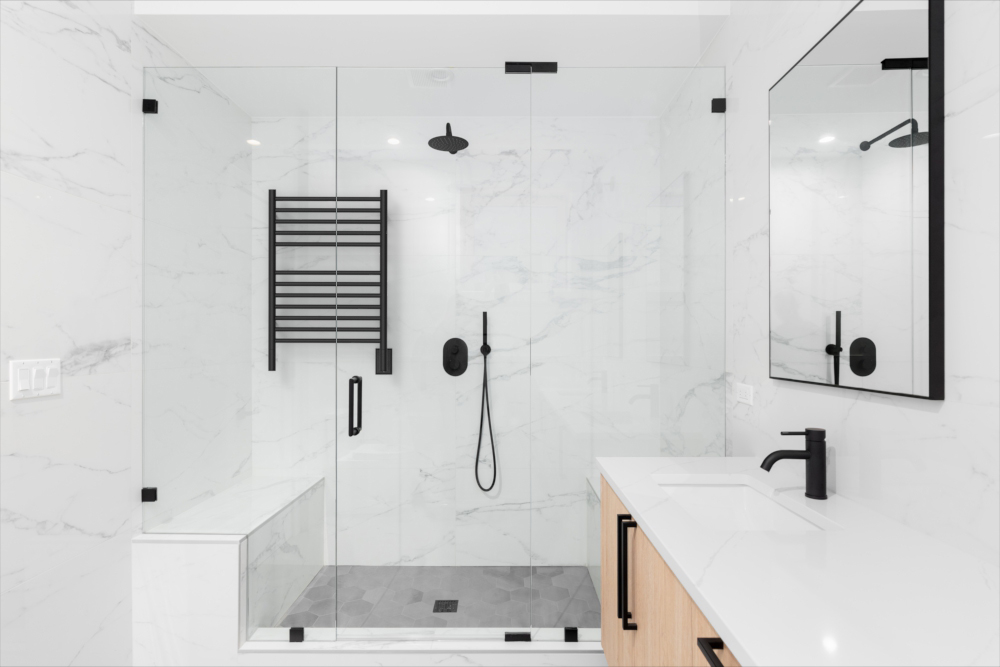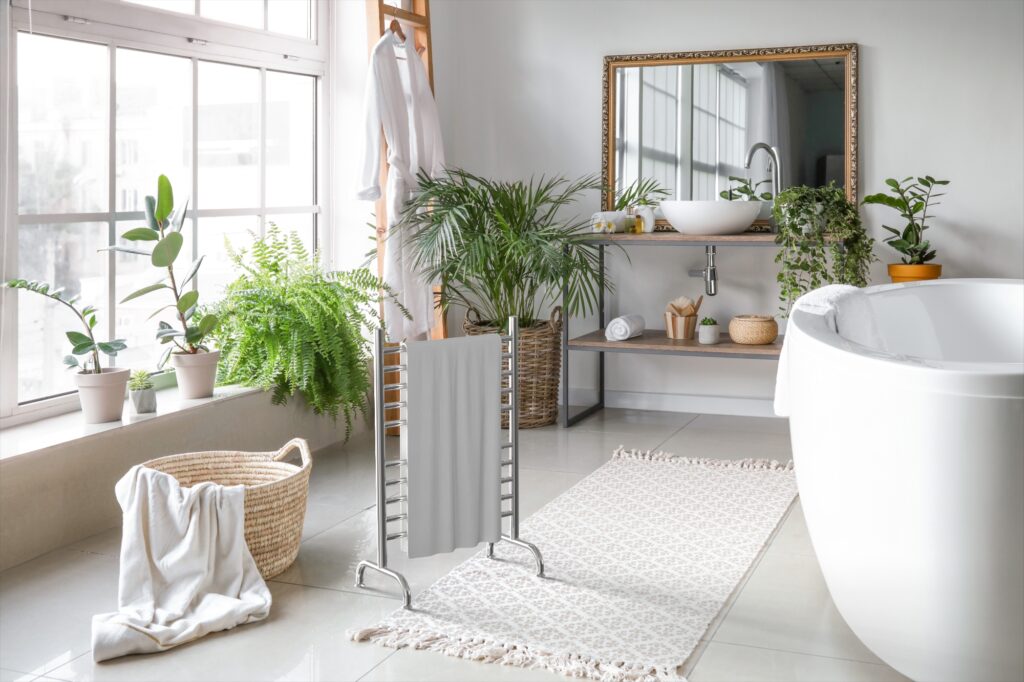
Damp towels linger in the “just-wet-enough” zone where microbes thrive. Heat shortens that window. When a towel dries quickly and completely, odor and bacterial growth are kept in check—day after day, shower after shower.
Read more: Wellness at home: keep towels fresh & hygienic with heated towel racksWhat the lab found (in plain English)

An independent laboratory (EMSL Analytical) ran a week-long simulation of daily towel use. Two identical racks were set up side-by-side: one heated, one unplugged. Towels were re-wetted once per day; in one arm of the test, they added a common skin bacterium, Staphylococcus aureus, to model what happens when real people use a towel. Measurements were taken on day 0, 2, 4, and 7, with sampling done in triplicate.
Results, at a glance:
- The raw counts show the same story: by day 7, unheated towels averaged 309,000,000 CFU/in², while heated towels averaged 520,000 CFU/in² under the same daily-use conditions.
- With added bacteria, heated-rack towels had ≥94% fewer live bacteria than unheated towels after day 4; musty odor showed up on the unheated towels by day 4 but not on the heated towels over the full week.
- In the “everyday soil” (no added bacteria) arm, heated towels consistently carried less bacterial load throughout the week.
Bottom line: moving from “slow air-dry” to “gentle, consistent heat” meaningfully limits bacterial growth and keeps towels fresher between washes. That’s the wellness win.
Why heat works for healthy-home routines
- Faster moisture off-ramp. Heat speeds evaporation so towels don’t sit in the microbe-friendly damp zone. (The study held room temps steady; in typical bathrooms—often more humid—the heated advantage may be even greater.)
- Even drying, every time. Bars create airflow channels; repeated daily cycles favor the towel that dries thoroughly versus the one that stays clammy in folds.
- Odor prevention, not perfume. The “musty” note in the control arm appears when growth accelerates; removing wet time prevents it from starting.

How to set yours up for best results
- Do not overcrowd. Avoid thick folds so warm air can reach the damp zones.
- Rotate after use. Hang the damp side facing out to hit it with airflow first.
- Laundry cadence stays yours. Heat isn’t a substitute for washing; it stretches freshness between cycles and keeps towels pleasant in multi-user homes. (The lab re-wetted once daily to mimic households with repeated use.)
Wellness meets design
Choosing a heated towel rack can be about more than comfort. If “healthy home” is the brief, prioritize:
- Capacity for your household. More showers per day? Step up bar count or add a second unit so everything fully dries between uses.
- Towel type. Plush bath sheets appreciate wider spacing or panel-style bars to preserve loft.
- Controls you’ll actually use. Look for timers/schedulers—consistency is where the hygiene gains happen.
A quick note on the science
- Test organism: S. aureus (typical skin bacterium).
- Sampling: triplicate 2″×2″ swatches, cultured and counted as CFU per square inch.
- Timepoints: day 0, 2, 4, 7.
All of this is detailed in the EMSL final report and the independent PhD assessment of that report.
Takeaway: If you’re building a wellness-minded routine at home, a heated towel rack is a small infrastructure change that pays off every morning—fresher towels, fewer odors, and a cleaner baseline for the whole bathroom. The lab data backs it up.
